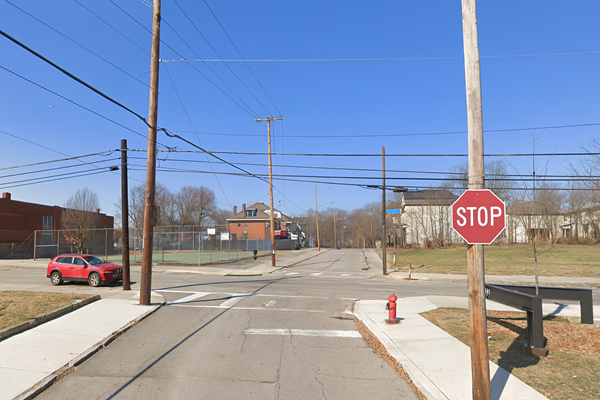Pittsburgh Installs Speed Tables, Crosswalks to Reduce Speeds on Larimer

Speed-related crashes can be devastating for accident victims and their families
Larimer Avenue has long been a concern for residents in Pittsburgh’s East End. A recent city traffic study revealed that out of nearly 5,000 vehicles traveling the road daily, an astounding 97% were speeding.
The study also found that 15% of drivers hit speeds above 42 mph, with one recorded at 83 mph on a street posted at 25 mph. Those numbers highlight how serious the problem has become and why the city has acted.
In response, officials installed three new speed tables, painted crosswalks, and curb extensions along Larimer Avenue to reduce speeding and improve visibility. These changes are part of the Vision Zero initiative, which aims to eliminate traffic fatalities and serious injuries across Pittsburgh. The goal is to make roads safer for pedestrians, cyclists, and drivers alike.
While infrastructure improvements are important, the reality remains that speeding is a driver’s choice. When that choice causes a crash, the law views it as negligence. For victims, this distinction is critical because it provides a pathway to hold drivers accountable and recover compensation for the harm caused.
Speeding as Evidence of Negligence
Injury cases often turn on whether a driver acted with reasonable care. Speeding is one of the clearest examples of failing to meet that standard. By exceeding posted speed limits, drivers not only break Pennsylvania traffic law but also create conditions that make accidents more likely and more severe.
A driver traveling 20 miles per hour over the limit has less time to react, longer stopping distances, and a significantly increased force of impact in a collision. These factors transform what might have been a minor incident into a life-altering event. Victims can face broken bones, brain injuries, spinal cord trauma, or worse, all because someone chose to ignore the rules of the road.
For legal claims, this matters because evidence of speeding can be used to establish negligence. Courts and insurance companies recognize that drivers who exceed the speed limit are acting unreasonably. That recognition strengthens a victim’s ability to pursue compensation for medical expenses, lost wages, and long-term care needs.
How Traffic Studies Strengthen Injury Cases
Traffic studies like the one conducted on Larimer Avenue do more than guide city planning. They also provide powerful evidence in personal injury cases. When a study shows that nearly every driver exceeds the speed limit, it demonstrates that the risk is not theoretical. It is real and documented.
Foreseeability is a cornerstone of negligence law. If a danger is known and predictable, drivers are expected to act accordingly. In Larimer, the city recognized the hazard by installing speed tables and crosswalks. That acknowledgment further reinforces that drivers who continue to speed are acting against both the law and common sense.
For victims, having this type of data available strengthens their claim. It shows that the risk of speeding was no secret and that drivers had no excuse for their behavior. An attorney can use this evidence to build a compelling case, connecting city data to the specific harm caused in an individual crash.
Types of Evidence That Can Prove Speeding
When someone is hurt in a crash, proving that the driver was speeding can be essential to a successful claim. Several forms of evidence can establish just how fast a driver was going. Each category of proof builds on the other, and when combined, they leave little doubt about negligence.
- Police Reports: Officers often note speeding violations or issue citations at the scene, providing official documentation of reckless driving.
- Traffic Camera or Radar Data: These objective measurements capture precise speed at or near the time of the crash.
- Expert Testimony: Accident reconstruction specialists analyze skid marks, vehicle damage, and roadway conditions to estimate speed.
- City Traffic Studies: Long-term data, like the Larimer Avenue report, demonstrate that speeding was a recognized and persistent hazard.
- Witness Accounts: Testimony from pedestrians, other drivers, or nearby residents can confirm that a vehicle was traveling at an unsafe speed.
Together, this evidence adds weight to a victim’s case. But gathering, preserving, and presenting this information takes experience. A personal injury lawyer can ensure that critical evidence is not overlooked and that it is used effectively to demonstrate negligence.
Community Safety and Legal Accountability
The Larimer Avenue project makes one thing clear: speeding is not a minor issue in Pittsburgh. It is a crisis. When drivers ignore posted limits and endanger others, they are negligent, and victims should not be left to carry the burden alone.
Pennsylvania has strict deadlines for filing personal injury claims, and waiting too long can jeopardize the right to recover damages. Acting quickly preserves evidence, protects legal options, and strengthens a victim’s case.
For anyone seriously injured in a pedestrian, bicycle, or vehicle accident involving a speeding driver, Romanow Law Group is ready to help. With a free consultation, our firm provides clear guidance, investigates violations, and fights to ensure negligent drivers are held accountable. Contact us today. Acting now gives you the strongest chance to secure justice and focus on recovery.
"I can’t thank Attorney Ismail Yousef enough for his outstanding support and dedication throughout my car accident case. From the very beginning, he demonstrated professionalism, deep legal knowledge, and genuine care for my situation. Ismail guided me through every step of the process with clarity and confidence, making a stressful experience so much more manageable. Thanks to his tireless work and expertise, I received the outcome I hoped for. I’m truly grateful and would highly recommend him to anyone in need of a trustworthy and skilled attorney." - Badri D., ⭐⭐⭐⭐⭐
